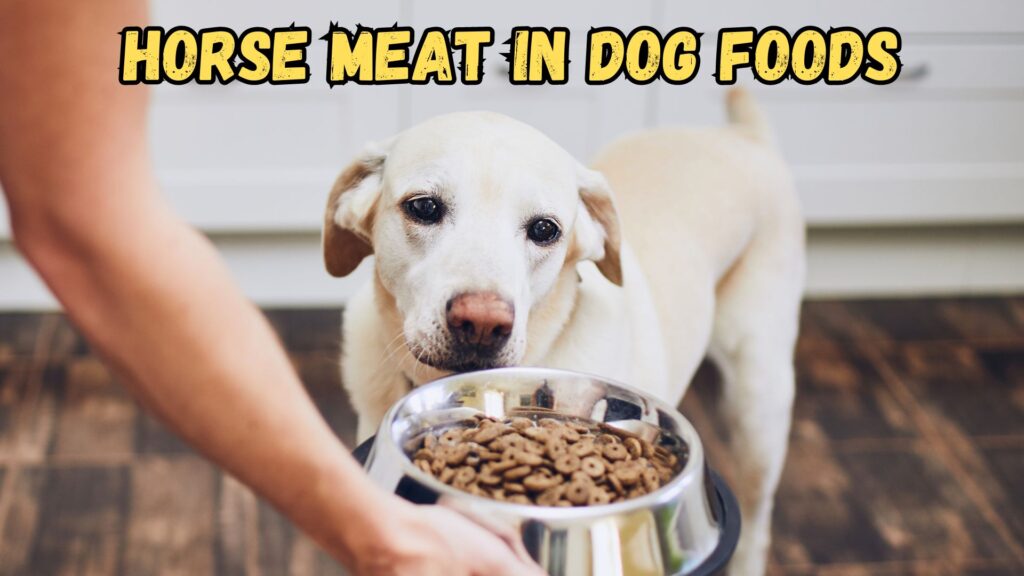The notion of dog food containing horse meat has long intrigued and concerned pet owners. The composition of dog food is a crucial factor for ensuring the health and well-being of our canine companions.
This article aims to address the question: “Is dog food made from horses?” by delving into the history, current practices, and regulations surrounding this issue.

Importance of Understanding Dog Food Ingredients
Understanding the ingredients in dog food is vital for multiple reasons. First and foremost, the health and safety of our pets depend on the quality and source of their food. Knowing what goes into their diet helps pet owners make informed choices, ensuring that their pets receive balanced nutrition without harmful substances.
Furthermore, ethical considerations play a role, as many people are concerned about the humane treatment of animals used in pet food production.
The History of Horse Meat in Dog Food
Historically, horse meat was a common ingredient in dog food, especially in the early 20th century. During World War II, food shortages led to the widespread use of horse meat due to its availability and affordability.
However, as societal views evolved and horses became more cherished as companion animals, the use of horse meat in pet food declined significantly.
By the 1970s, the inclusion of horse meat in dog food was largely phased out in the United States due to changing public sentiment and legal restrictions.
Current Regulations and Practices
Today, reputable dog food brands in the United States do not use horse meat in their products. The use of horse meat in pet food is banned in the U.S., and no USDA-inspected facilities process horse meat for this purpose. However, this is not the case worldwide. In some countries, such as Mexico and parts of Europe, horse meat can still be legally used in pet food.
Despite the legal ban, there are occasional concerns about the possibility of mislabeled meat products. For instance, the 2013 horse meat scandal in Europe revealed that horse meat was being mislabeled as beef in various food products. This incident raised awareness and led to stricter regulations and oversight in the food industry.
Ingredients Commonly Found in Dog Food
Modern dog food primarily consists of ingredients such as chicken, beef, turkey, lamb, and fish. These meats are chosen for their nutritional benefits, including high protein content, essential fatty acids, and vitamins.
Additionally, dog food often includes vegetables, grains, and supplements to provide a balanced diet. Common grains and vegetables found in dog food include rice bran, corn, soybean meal, sweet potatoes, and beet pulp.
FAQs
Is it legal to use horse meat in dog food in the United States?
No, it is illegal to use horse meat in dog food in the United States. The USDA does not inspect horse meat for pet food production, making it prohibited for sale and use in commercial pet foods.
Why was horse meat used in dog food historically?
Horse meat was used in dog food historically because it was readily available and inexpensive, especially during times of food shortages such as World War II. However, its use declined as horses became valued more as companion animals and due to changing public attitudes and legal restrictions.
What should I look for on a dog food label to ensure it doesn’t contain undesirable ingredients?
Look for dog foods that list specific meat sources, such as “chicken meal” or “beef meal,” rather than vague terms like “animal by-products.”
Avoid foods with unspecified ingredients like “animal digest” or “natural flavors” without clear origins. Opt for brands that provide transparency about their ingredient sources and manufacturing practices.
Conclusion
While horse meat was once a common ingredient in dog food, it is no longer used in reputable pet food brands in the United States due to legal restrictions and changing societal values. Today, dog food primarily contains meats like chicken, beef, and fish, along with various vegetables and grains to ensure a balanced diet.
Pet owners should remain vigilant about the ingredients in their pets’ food, choosing products from transparent and reputable brands to ensure the health and safety of their beloved companions.


